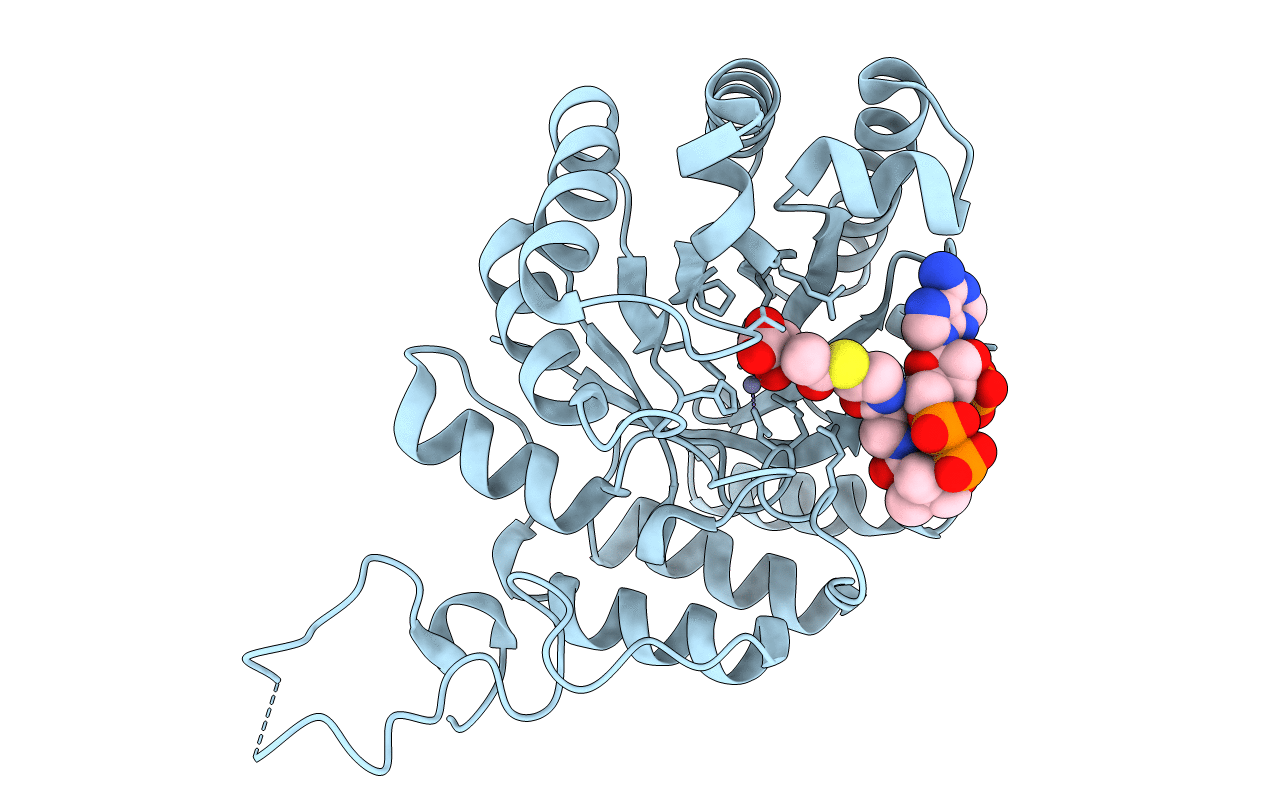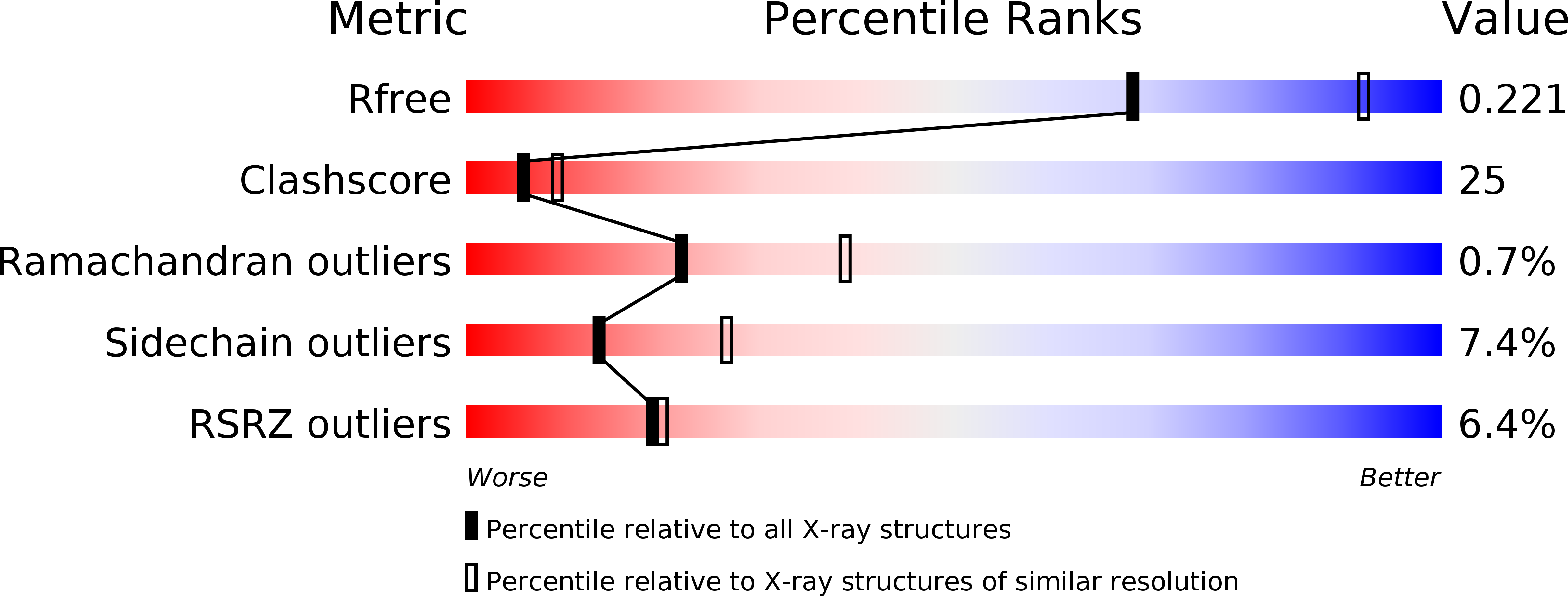
Deposition Date
2007-12-11
Release Date
2008-11-11
Last Version Date
2023-11-15
Entry Detail
PDB ID:
3BLI
Keywords:
Title:
Crystal structure of the catalytic domain of LiCMS in complexed with pyruvate and acetyl-CoA
Biological Source:
Source Organism:
Leptospira interrogans (Taxon ID: 173)
Host Organism:
Method Details:
Experimental Method:
Resolution:
2.50 Å
R-Value Free:
0.28
R-Value Work:
0.22
Space Group:
P 31 2 1


